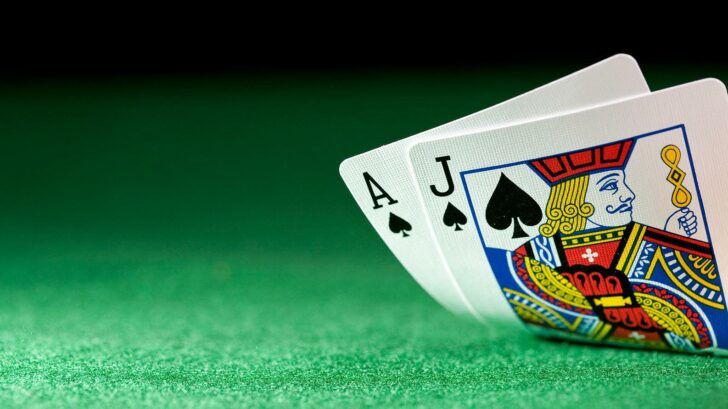4 Ways to Improve Your Blackjack Strategy Skills in 24 Hours

Blackjack takes months to truly master, but you can seriously improve your skills in a day or less. Here are a few simple tips to get you on your way toward success.
You’re not the patient type. A product of the Facebook/Buzzfeed generation, you want results in real-time. You’re shocked as to how it took God six days to make the Earth. When your mom said: “Good things come to those who wait,” you waited for about 30 seconds, then forgot what it is you wanted in the first place.
Now, you’re trying to sit still for long enough to hone your blackjack skills. Sorry, but card counting system taking months to master probably aren’t for you. You need a quick fix. Well, you’re in luck. We’ve got four steps you can take to improve your game significantly in the amount of time it takes someone to take roughly 20,000 breaths:
#1: Memorize the different variations
Blackjack is not a one-size-fits-all game. There are several versions of it in popular use, including Vegas Strip, European, Atlantic City and Macau. Vegas Strip is the classic version, and has generally player-friendly rules. Atlantic City tables allow early surrender, which pushes the house edge down. However, games are usually dealt from 8 decks, evening out the house edge in relation to the Vegas Strip version.
On the other side, European rules are the hardest on the player. That’s because players can only split their hand once, and can only double down when they have a hand worth 9, 10 or 11. And Macau rules are the MOST player-friendly version, with many blackjack tables there having house edges of only .16%.
Follow this chart:
Vegas Strip: .35%
Atlantic City: .36%
European: .42%
Macau: .16%
#2: Learn when to hit
This may seem obvious, but it isn’t as open-and-shut as it appears. In order to do it right, you need to put your hand in the context of the dealer’s upcard. If you have below a 12, hit automatically. A hard 17 or above? Stand automatically.
But if you hold a 12-16, a so-called “stiff hand,” your next move depends on the dealer’s upcard. If the dealer has an eight or above, you need to hit it as hard as you can. If the upcard is a 2-7, stand (the dealer has a high chance of busting in this situation).
But, if you have a 12 and the dealer shows a 2 or 3, you can feel free to break the rules I mentioned above and hit. It’s worth the risk.
As for a “soft” 12-16 (meaning that the hand contains an Ace) follow the same rules as above. If your soft hand is greater than 17, however, things get a bit more complicated.
If you have a soft 17, you should hit in most situations, as you chances of beating the dealer straightup are low and your chances of busting are non-existent. Even on a soft 18 you should hit when the dealer has a 9, 10 or facecard. The risk is worth it.
#3: Learn when to split
Splitting looks complicated to someone new to blackjack strategy, but it’s actually quite a bit easier than it looks. Here are the situations in which you should NEVER split: pair of tens, pair of fives, pair of facecards.
Here’s why: a pair of tens (or facecards) adds up to 20, meaning your chances of winning are extremely high. Don’t muddy that up by splitting. A pair of fives is a strong foundation, because you have a good chance of landing a facecard on top of them. By contrast, splitting fives just means having two crappy hands.
Here’s when you SHOULD split: when you have Aces. A pair of Aces has very little value in blackjack. But splitting them lays the foundation for two strong hands. Ditto for a pair of eights. A hard 16 is a pretty weak hand, as it’s too low to give the player a good chance of winning but also high enough to have a high bust rate.
#4: Learn when to double down
Doubling down is one of the most important aspects of winning at blackjack. In order to tip the house edge in your favor you need to maximize your return on the hands you do win. Such as when a shark smells blood, you need to smell when you have the dealer on the ropes.
ALWAYS double down when you have an 11, regardless of the dealer’s upcard. That’s because you’re chance of landing a ten or facecard are relatively high, so you should win the hand.
You should also double when you have a ten and the dealer has an 8 or under, as the dealer has a high chance of busting, so you should put as much money on the table as possible (in addition, your chances of busting are very low in this situation).
Here’s when you should NOT double down: when you have a stiff hand (12-16). Your chances of busting are pretty high, and it’s not worth the risk to put extra money on the table.







